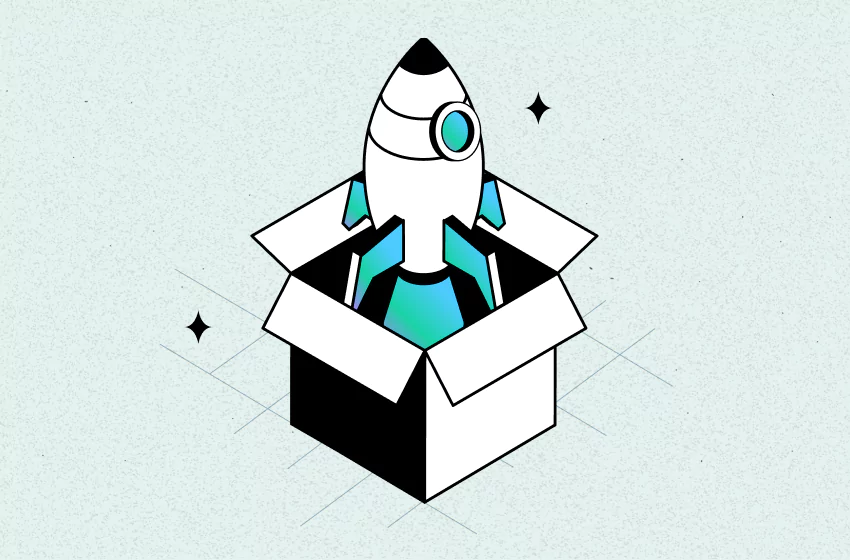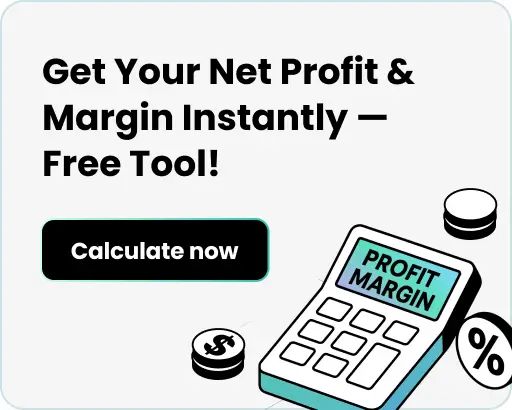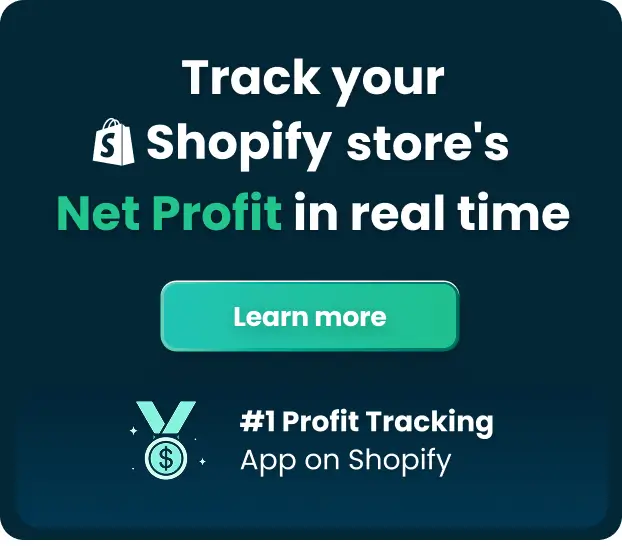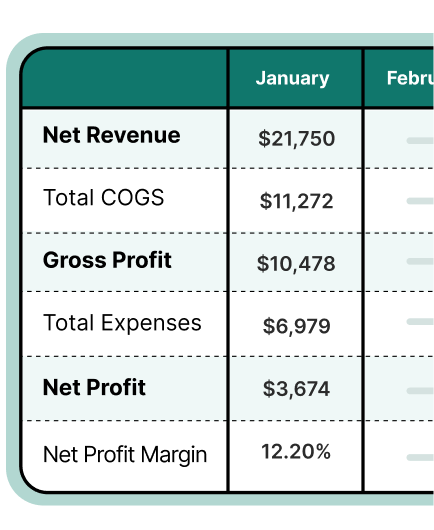15 High Profit Margin Small Businesses to Start in 2025

There are plenty of small business ideas with low startup costs and strong profit margins. In this guide, you’ll find high profit margin small businesses to start—even if you're short on time, budget, or experience.
Best High Profit Margin Small Business Ideas
Below are high profit margin small businesses options —many of which involve high profit margin products to sell online. Whether you're launching a side hustle or planning a full-time leap, these ideas are built for scale and sustainability.
1. Start a Dropshipping Business with Minimal Overhead
- Gross Profit Margin: 20% - 50%
- Entry Cost: $200 - $1,000
- Scalability: High – Can grow by adding new products or scaling ads and marketing strategies.
Dropshipping is one of high profit margin businesses model where you sell products online without stocking inventory. When a customer places an order, your supplier ships the product directly to them. You handle marketing and customer service—no warehouse needed.
Gross profit margins in dropshipping typically range from 20% to 50%, depending on the niche and pricing strategy. Many dropshippers make their first $1,000 in under 30 days by targeting viral products with low competition. Some entrepreneurs grow their stores to $10K/month in revenue by building niche brands and optimizing TikTok content or Facebook ads.
2. Sell Digital Products Like Templates or Printables
- Gross Profit Margin: 70%+
- Entry Cost: $0 - $100
- Scalability: Very High – Once created, digital products can be sold endlessly without additional costs.
Digital products like planners, resume templates, or Canva designs cost little to make but can be sold repeatedly. Profit margins often exceed 70% since there's no ongoing production cost.
Starting costs can be as low as $0 to $100, depending on the tools you use. Platforms like Canva, Notion, or Figma allow free design creation. You’ll only need to invest in listing fees, a domain name, or marketing if desired.
3. Make and Sell Handmade Crafts from Home
- Gross Profit Margin: 50% – 75%
- Entry Cost: $100 - $500
- Scalability: Moderate – As you gain customers, you can scale by producing in batches or outsourcing production.
If you're into jewelry, candles, or custom artwork, handmade products can sell at high markups with net profit margins ranging from 50% to 75%, especially if your craft has a unique style or brand.
You can get started with around $100–$500, depending on the materials needed for your craft. Platforms like Etsy make it easy to turn hobbies into profits. Margins vary but can reach 60% or more, depending on materials and niche.
Want to know how much profit you can really make from selling handmade crafts? Use our profit margin calculator to estimate your potential earnings based on your materials, costs, and pricing. Try our free profit margin calculator now!
4. Create and Sell Online Courses in Your Niche
- Gross Profit Margin: 80%+
- Entry Cost: $100 - $500
- Scalability: High – Sell to 10 or 10,000 students with little to no change in workload.
Have skills others want to learn? Package them into video courses. Once the course is created, it becomes a passive income stream. Course creators on platforms like Teachable or Udemy can see margins above 80%.
You can start with $100–$500, depending on your tools. If you already have a laptop, free tools like Loom or Canva can help you design lessons and record content. Hosting platforms may charge a small fee, but you can start selling right away.
Courses are not only of high profit margin small businesses but also highly scalable one. You can sell to 10 or 10,000 people with no change in your workload. As your audience grows, you can increase your prices, launch new courses, or bundle them into premium packages.
5. Earn Passive Income with Affiliate Marketing
- Gross Profit Margin: 50% - 70% (depending on affiliate commissions)
- Entry Cost: $0 - $200
- Scalability: High – As your audience grows, so does your income.
It’s one of the lowest-cost, high-profit-margin small businesses. You don’t need to create or ship a product—just share helpful content and recommend tools or items your audience already needs. Top affiliates earn anywhere from $1,000/month to six figures annually depending on reach and niche. Affiliate marketing scales with your audience. As you build more content (articles, videos, posts), your links continue working for you 24/7.
You can begin with as little as $0–$200, depending on whether you want to build a blog or stick to free platforms like TikTok, Instagram, or YouTube. Many tools like Linktree, Canva, and Substack are free to use when starting out.
6. Offer Freelance Writing or Copywriting Services
- Gross Profit Margin: 90%+
- Entry Cost: $0 - $500
- Scalability: Medium – Limited by available time but can increase rates as experience grows.
Skilled writers can charge $100–$500 per article, while experienced copywriters earn $2,000+ per project for sales pages or email sequences.
With minimal expenses (a laptop and internet), writers often keep 90%+ of what they earn. Free tools like Grammarly, Hemingway, and Google Docs can support you while building your portfolio.
7. Start a Marketing or Branding Consultancy
- Gross Profit Margin: 80%+
- Entry Cost: $0 - $1,000
- Scalability: High – You can scale by increasing rates, expanding your team, or offering more packages.
Businesses are always looking for experts to help them grow. If you have experience in SEO, content marketing, or brand strategy, this service-based model can return high profits with little upfront investment.
Consulting typically comes with high profit margins because you're selling your expertise, not a physical product. Experienced consultants can charge $75–$250/hour, and full strategy packages often range from $2,000 to $10,000+ depending on the business size and scope.
8. Launch a Print-on-Demand Ecommerce Store
- Gross Profit Margin: 30% - 60%+
- Entry Cost: $50 - $500
- Scalability: High – Launch multiple products and designs, automate fulfillment, outsource customer service
A print-on-demand (POD) store lets you sell custom-designed products like t-shirts, mugs, tote bags, and phone cases—without holding any inventory. When someone places an order, your POD supplier prints and ships it directly to the customer.
With no upfront cost for inventory, POD stores is one of the high profit margin small businesses that have low overhead. You can typically mark up items by 30%–60% or more, especially if your designs appeal to a passionate niche audience (like dog lovers or plant parents). This model is also highly scalable—you can launch multiple designs or stores, automate fulfillment, and even outsource customer service as you grow. Some founders generate $5K–$20K/month by building a strong brand around niche themes.
Expect to invest under $100 if you already have a computer. You’ll need a Shopify or Etsy store, basic design software (Canva or Adobe), and time to research niches and create great listings.
Printful is the #1 solution for starting a POD store, offering seamless integration with Shopify, a wide range of products, and competitive pricing that helps maximize your margins.
9. Become a Virtual or In-Person Fitness Coach
- Gross Profit Margin: 70% - 90%+
- Entry Cost: $200 - $500
- Scalability: High – Expand with online programs, group coaching, or subscription memberships
Fitness coaches help clients reach their health goals through personalized workout plans, motivation, and habit-building.
Fitness coaches charge $30-$100 per session, often with minimal costs beyond certifications and equipment. You can expand beyond 1:1 sessions by launching online programs, digital courses, or a group coaching model. Some fitness coaches scale to $5K–$20K/month with online memberships or subscription communities.
With a basic certification and a strong online presence, you can get started for $200–$500. If you go virtual, all you need is a phone or laptop, a fitness-friendly space, and tools like Zoom, Trainerize, or Google Sheets for workouts.
10. Offer Career, Life, or Business Coaching
- Gross Profit Margin: 80% - 90%+
- Entry Cost: $200 - $500
- Scalability: High – Expand with group coaching, online courses, or membership programs
You could focus on career coaching (helping people with job transitions), life coaching (personal growth), or business coaching (entrepreneurship and leadership).
Coaching is one of the high-profit-margin small businesses since you're offering your expertise and time. Coaches can charge anywhere from $100 to $500 per session, and those with niche specialties or high-level expertise can earn even more.
You can start a coaching business with minimal investment—typically $200–$500 for basic certifications (if desired), a website, and business tools (e.g., Calendly, Zoom). Marketing costs can be low if you use organic social media strategies.
11. Start a Dog Walking or Pet Sitting Business
- Gross Profit Margin: 50% - 80%
- Entry Cost: $100 - $300
- Scalability: Moderate – Expand with additional staff or a range of services
Pet owners are always looking for trustworthy caretakers. With low overhead and hourly rates between $15-$40, this can be a quick-to-launch, high-margin business, especially in urban areas.
Starting costs are low, usually around $100 to $300 for marketing materials (business cards, flyers), insurance, and a simple website. You can begin by leveraging free platforms like Rover or Wag! to build your client base before investing in professional tools or advertising.
12. Plan Events for Businesses or Private Clients
- Gross Profit Margin: 20% - 30%
- Entry Cost: $500 - $1,500
- Scalability: High – Expand to larger events or team-based planning
From corporate retreats to weddings, event planning fees often range from 10%-20% of the total event budget. Strong organizational skills and vendor relationships can lead to impressive profit margins.
You can start small by planning local events, then scale by expanding your offerings to corporate clients, destination events, or even launching a team of planners to manage larger events.
Initial costs can range from $500 to $1,500, which typically covers certifications, insurance, website development, and marketing materials. A large portion of your costs will go into professional networking, attending events to meet vendors, and building your portfolio.
13. Sell Stock Photos or Photography Packages
- Gross Profit Margin: 50% - 90%
- Entry Cost: $500 - $2,000
- Scalability: High – Passive income with recurring sales
If you enjoy photography, you can sell your work to stock platforms like Shutterstock, Adobe Stock, or iStock. Stock photos are a passive income stream once the photos are uploaded to platforms.
A professional photographer can charge between $500 to $3,000 per event, depending on the scope. Once equipment is covered, margins are high, and stock images can create recurring income.
14. Launch a Healthy Meal Prep or Delivery Service
- Gross Profit Margin: 30% - 50%
- Entry Cost: $1,500 - $5,000
- Scalability: High – Can grow with demand
Busy professionals are happy to pay for fresh, ready-to-eat meals. Local meal prep businesses can command high prices, and by prepping in bulk, you can maintain margins of 30%-50% or more. You can charge anywhere from $7 to $15 per meal, depending on the ingredients, portion sizes, and delivery fees.
This business is highly scalable. You can start small by preparing meals from home and serving a limited number of clients. As demand increases, you can hire staff, rent a commercial kitchen, and offer more variety in meal plans.
Start-up costs can range from $1,500 to $5,000, covering kitchen equipment, initial ingredient inventory, packaging, and marketing materials.
15. Start a Niche Subscription Box Business
- Gross Profit Margin: 40% - 60%
- Entry Cost: $1,000 - $3,000
- Scalability: High – Can expand with more subscribers and new box offerings
A niche subscription box business delivers curated products to customers on a regular basis. Whether it’s skincare, fitness gear, snacks, or books, the goal is to tap into a specific audience with a targeted interest.
You can source items wholesale and build brand loyalty, with margins between 40%-60% depending on product curation. With subscription fees ranging from $10 to $100+ per month, you can create a scalable model.
Stay On Top of Your Profit Margin
For small business owners, keeping a healthy profit margin is the key to building a successful store. TrueProfit, the #1 net profit analytics tool for Shopify, ensures instant accuracy on profit margin by calculating all costs such as ad spend, product costs, shipping fees, and hidden expenses.
Here's how TrueProfit makes profit margin tracking accurate:
- Keep track of your profit margin and other most important numbers - net profit, expense, COGS, return on ad spend, in real time dashboard
- Monitor every cost in total & spot & which costs are eating into merchants’ profit margin.
- Track changes trends in profit margin and overall store performance in PnL dashboard.
With TrueProfit, merchants can make smarter decisions and build a high-margin store without any small financial guesswork.
How to Choose the Right High Profit Margin Small Businesses for You
Not every high-profit business is the right fit—and that’s okay. The best business for you is the one that aligns with your skills, lifestyle, budget, and long-term goals.
Here’s how to narrow it down:
- Start with your strengths: What are you already good at? Choose something aligned with your skills or interests.
- Know how much time you can give: Some businesses are passive (like affiliate marketing or selling digital products), while others need daily attention (like event planning or coaching). Be honest about your schedule—especially if this is a side hustle.
- Calculate true costs: Factor in time, marketing, tools, and supplies before committing.
- Validate the market: Make sure there's demand through keyword research or social media engagement. Search for similar products or services. Are people buying? Are they leaving reviews? A profitable niche often has competitors—it’s a sign there’s money to be made.
- Consider scalability: Look for models that can grow with you. Digital products and services often scale better than physical goods.
High Profit Margin Business FAQs
Leah Tran is a Content Specialist at TrueProfit, where she crafts SEO-driven and data-backed content to help eCommerce merchants understand their true profitability. With a strong background in content writing, research, and editorial content, she focuses on making complex financial and business concepts clear, engaging, and actionable for Shopify merchants.




 Shopify profits
Shopify profits
















